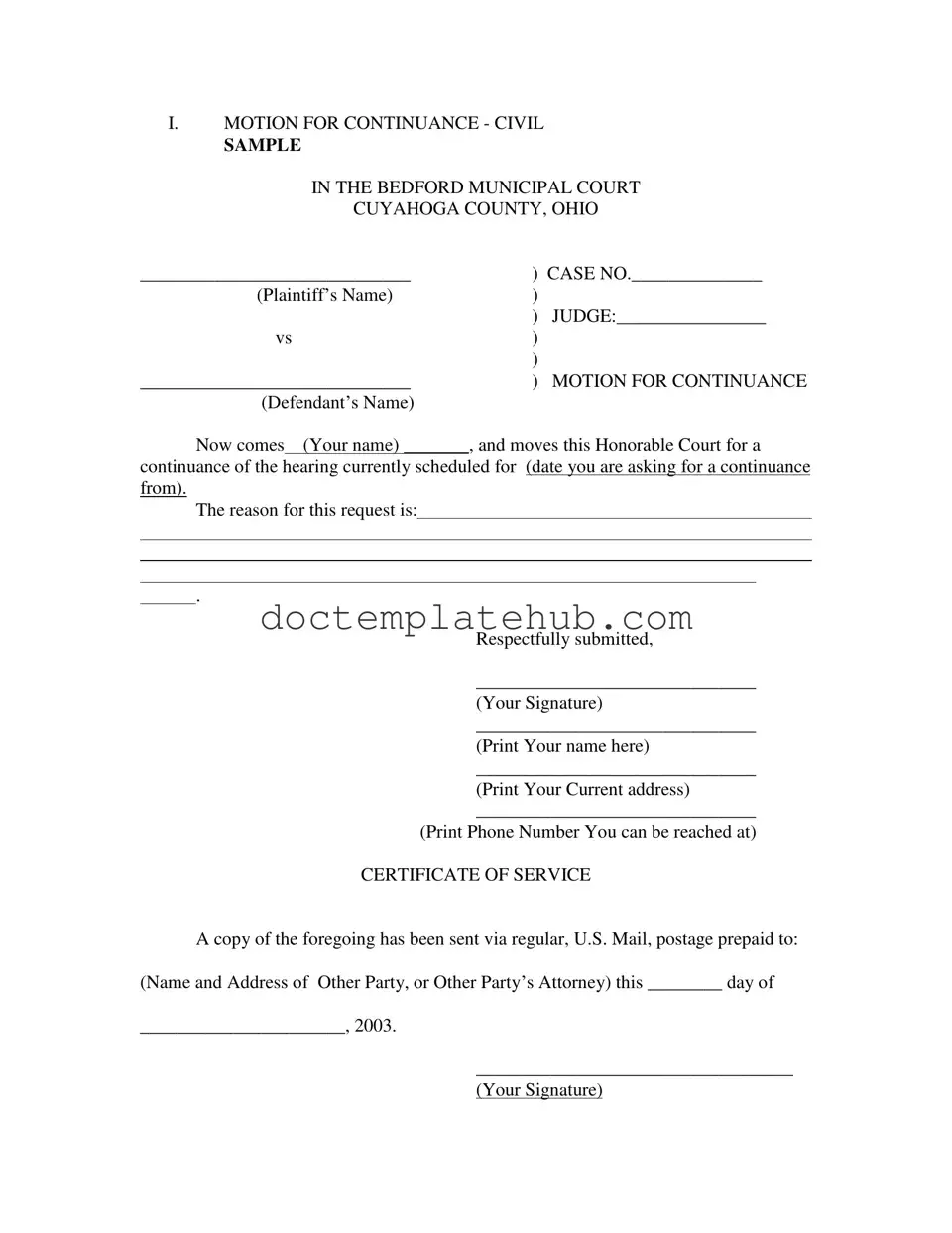What is a Motion for Continuance?
A Motion for Continuance is a formal request to postpone a scheduled court hearing or trial. It is typically filed by one of the parties involved in a case when they need more time to prepare or due to unforeseen circumstances that prevent them from attending the hearing as scheduled.
Who can file a Motion for Continuance?
Any party involved in a case, whether the plaintiff or defendant, can file a Motion for Continuance. It is essential to provide a valid reason for the request to be considered by the court.
What information should be included in the Motion for Continuance?
The Motion for Continuance should include your name, the case number, the name of the judge, the date of the originally scheduled hearing, and the reason for requesting the continuance. Additionally, your signature and contact information must be provided.
How do I submit the Motion for Continuance?
The completed Motion for Continuance must be submitted to the court where your case is filed. You can typically file it in person at the courthouse or, in some jurisdictions, electronically through the court’s online filing system.
Is there a deadline for filing a Motion for Continuance?
Yes, there is usually a deadline for filing a Motion for Continuance. It is advisable to file the motion as soon as you know you need a postponement. Each court may have its specific rules regarding how far in advance you must file the motion before the scheduled hearing.
What happens after I file the Motion for Continuance?
After filing the Motion for Continuance, the court will review your request. The judge may grant or deny the motion based on the reasons provided. If granted, the court will set a new date for the hearing.
Do I need to notify the other party about the Motion for Continuance?
Yes, you must notify the other party or their attorney about the Motion for Continuance. This is typically done by sending them a copy of the motion via regular U.S. Mail, as indicated in the Certificate of Service section of the form.
Can I file a Motion for Continuance for any reason?
While you can request a continuance for various reasons, the court will only grant it if the reasons are deemed valid. Common reasons include illness, scheduling conflicts, or the need for more time to gather evidence or prepare a case.
What should I do if my Motion for Continuance is denied?
If your Motion for Continuance is denied, you must be prepared to attend the scheduled hearing. It is important to gather all necessary documents and evidence to present your case effectively on the original date.
